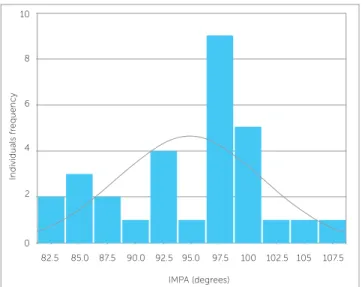Dental Press J. Orthod. vol.18 número3
Texto
Imagem




Documentos relacionados
Maxillary incisors crowding relapse shows some etiological factors as retention time, initial crowding severity; relapse of teeth in the opposite side, changes in arch
Analysis of specimen ARI scores ater debracketing revealed a tendency of Charisma group specimens with surfaces treated by hydroluoric acid, aluminum oxide, mount- ed stone
Objective: The authors of this study aim to inform the orthodontic society of fundamentals about digital cephalomet- ric radiographic image and computed tomography, discussing
Table 5 shows that there was statistically sig- nificant increase of the maxillary transverse distanc- es on the region of anatomic cephalometric points (Go, Ag and J) and of
The significance of the Perceived Severity do- main was influenced by question 2, the only one that showed a significant positive correlation with pain intensity. Because
Among the Long Face pattern patients 93.3% were dolichofacial patients, 43.3% with presence of posteri- or crossbite, 16.6% with presence of anterior open bite and 60% with
Female Caucasian patient, 14 years and 8 months old, presenting Angle Class III malocclusion, skel- etal Class III pattern due to mandibular excessive growth, superior and
Both whit- ened groups (2 and 3) failed to achieve a clinically efficient bond strength, especially group 3 (whit- ened with ACP), underscoring the need to restore the tooth